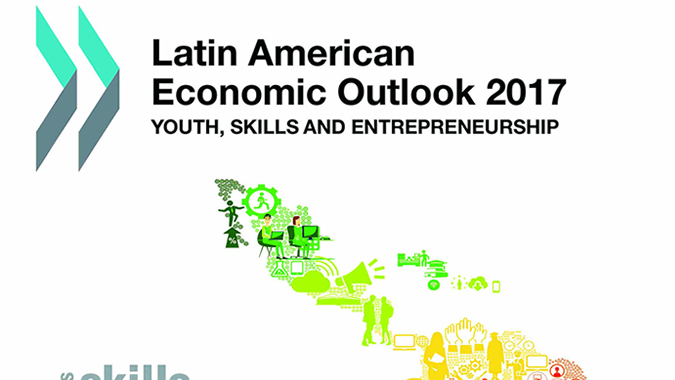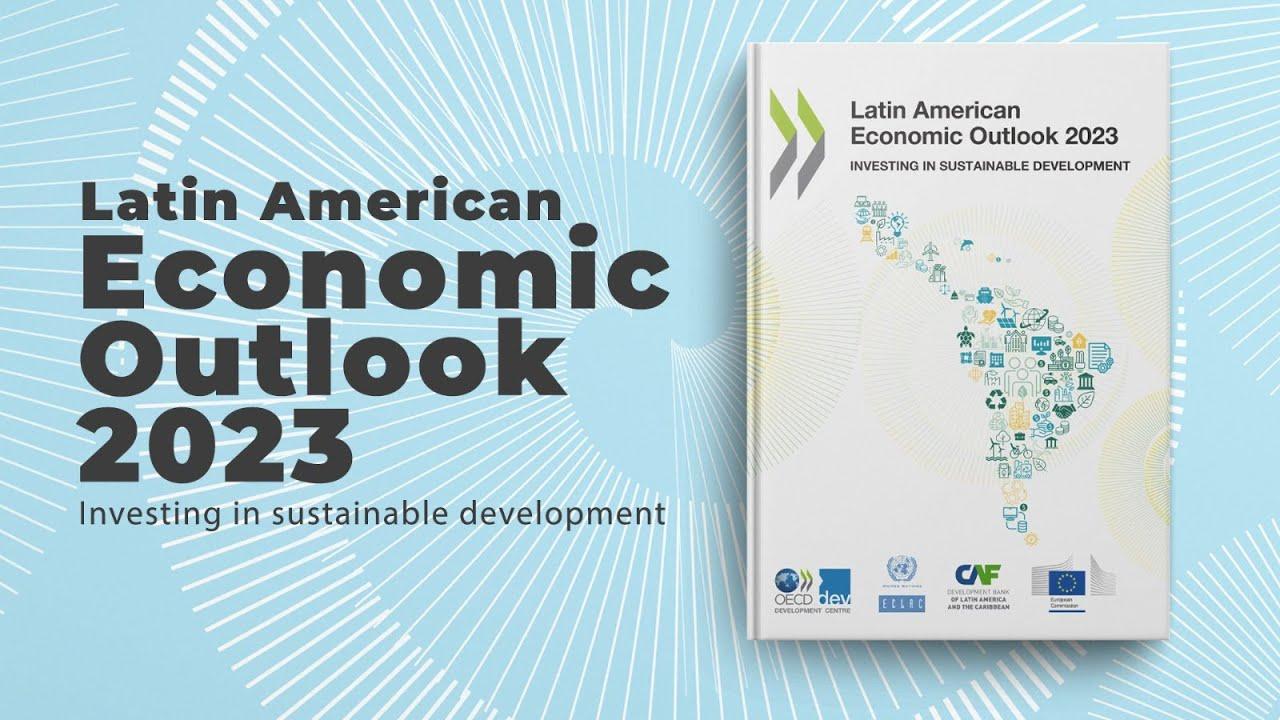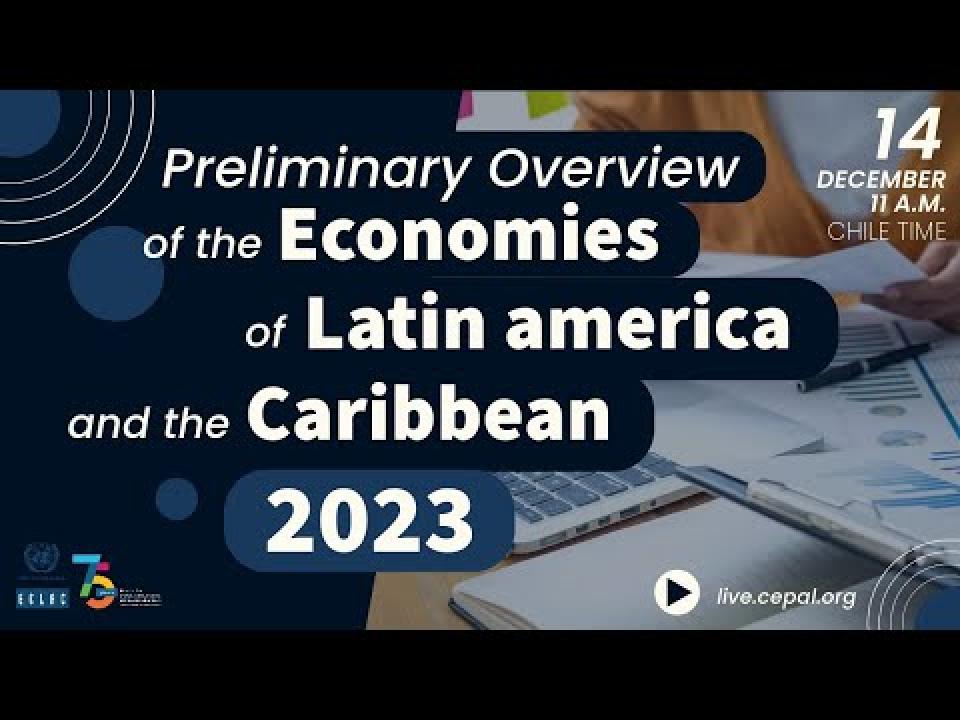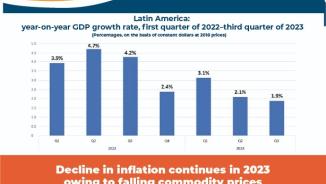video
Latin America and the Caribbean’s (LAC) GDP will shrink by between 0.9% and 1% in 2016, according to the latest estimates, the second consecutive year of negative growth and a rate of contraction the region has not seen since the early 1980s. According to the Latin American Economic Outlook 2017, the region should recover in 2017, but with modest GDP growth of between 1.5% and 2%, below expected growth in advanced economies.
According to the report, jointly produced by the Development Centre of the Organisation for Economic Co-operation and Development (OECD), the United Nations Commission for Latin American and the Caribbean (UN-ECLAC) and the Development Bank for Latin America (CAF), this prolonged economic deceleration could jeopardise the continent’s socio-economic progress. Seven million Latin Americans became poor in 2015, and 25 to 30 million vulnerable Latin Americans risk falling back into poverty in the next two years. Although these outcomes are not de-linked from the global economic environment, they also have their own country and regional dynamics.
The three organisations call for investing in youth through better education, improved skills and entrepreneurship opportunities to ignite economic growth and build a solid basis for long-term progress.
“Young adults make up a quarter of the population in Latin America. The ability to harness this demographic dividend of 163 million people aged between 15 and 29 is crucial. Allowing young people, including girls, to fulfill their full potential is the best investment for the future of Latin America. In a context of increased school enrolment, empowering youth who are eager to work while ensuring their talents match labour market demands and structures is a smart way to create inclusive growth. It will also help achieve productivity gains while reducing inequalities," said OECD Chief of Staff and G20 Sherpa, Gabriela Ramos, while launching the Outlook today at the 25th Ibero-American Summit in Cartagena.
The Outlook shows how social, ethnic, gender and geographical conditioning impacts people’s paths through life. Nearly 30 million young individuals in the LAC region are neither working nor engaged in education or training (NEET), which is 21% of the people in this age group compared with 15% in OECD countries. Another 19% of youths are in informal jobs. Women are particularly disadvantaged, making up 76% of NEETS and occupying mainly unpaid jobs. At least 6 out of 10 youths living in poor households are NEETs or working in the informal sector, and 4 out of 10 youths living in vulnerable middle-class households are NEETs or in informal jobs. This compares to only 2 out of 10 from middle-class households.
As noted by Alicia Bárcena, Executive Secretary of ECLAC, “The region can gain from better including youth and offering quality education, skills and entrepreneurship opportunities in order to foster growth and inclusion. The lack of good employment opportunities and the poor transition from school to work are hindering youth inclusion and disappointing expectations in our region. Too many young people are left out of access to public services, savings and social mobility.”
Though education in LAC has improved significantly in the last decade, few students advance far enough up the education ladder to be as productive in later life as they could be. Two out of three young Latin Americans are not equipped to meet labour market needs for sophisticated technical, professional and management skills. At the same time, 50% of formal firms in LAC report having difficulty filling jobs, compared to 36% in OECD countries. Efforts should focus on identifying low performing students, improving the transition to higher levels of education and strengthening technical education and training. Training programs should combine classroom and workplace learning to transition to formal jobs.
In this context, 26% of young entrepreneurs turn to entrepreneurship out of necessity, because they have no better options for work, compared with 16% in OECD countries. Barriers to entrepreneurship are 59% higher in LAC than in the OECD on average. The integration of LAC’s young entrepreneurs into global value chains is still limited, and they face challenges accessing financing, improving capacity building, developing business networks and an entrepreneurial culture, accessing new markets, and overcoming regulatory barriers, even more so than their adult counterparts. The Outlook recommends multi-dimensional policy support, such as complementing micro-credits with lower regulatory barriers, linking young entrepreneurs with business networks, and expanding managerial and financial training. Supporting access to broadband services, infrastructure and affordability to help youth make the most of the digital economy is also paramount.
“Policy makers need to collect information and evaluate youth programmes to design policies taking on board the current technological, political and social transformations that are metamorphosing the world of work and the environment, notably cities where 9 out of 10 youths in LAC will live by 2050. At the same time, these investments should be programmed within a credible and sustainable fiscal framework,” said Enrique García, CAF President and Chief Executive Officer.
Participants at the report’s launch also included Colombia’s President Juan Manuel Santos, Peru's President Pedro Pablo Kuczynski and the Ibero-American General Secretary (SEGIB) Rebeca Grynspan.
For more information on the Latin American Economic Outlook 2017, visit: www.latameconomy.org.
To obtain a copy of the report, journalists are invited to email bochra.kriout@oecd.org.
Press contacts:
- CAF: rvalls@caf.com, Tel: +57 (1) 743-7368
- ECLAC: prensa@cepal.org, Tel: + (56 2) 2 210 2040
- OECD Development Centre: bochra.kriout@oecd.org , Tel: +33 (0)6 26 74 04 03



